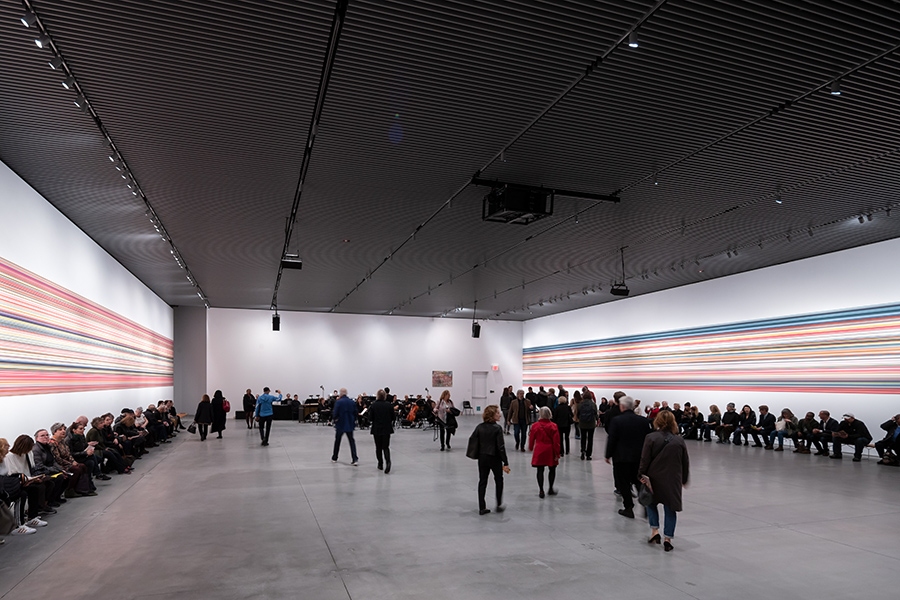Post Date: 12/14/22
The COVID pandemic hit at an interesting time for architecture, both exacerbating and setting the stage for major changes in how we approach buildings. Before the pandemic, the combination of mixed-use, temporary (pop-up galleries and stores, or WeWork-style space sharing) and reinterpreted (like Wonderspaces, Powerhouse Arts and the Highline) spaces suggested that it might be necessary to rethink how we design and use buildings. During the pandemic, some of these trends accelerated. In our series, we’ll explore how undetermined, multi-program and itinerate spaces impact architectural design and services.
“‘Are we building the right building?’ said James Steward, the director of the Princeton University Art Museum, regarding its new building, designed by David Adjaye. ‘Are we giving ourselves enough future proofing?’
“That ‘future proofing’ has meant trying to build in as much flexibility as possible, Mr. Steward said, so that if the project turns out to have been too heavy on social gathering spaces or discreet education spaces, for example, the proportions can be adjusted.”
New York Times, “After a Covid Contraction, Museums Are Expanding Again,” Oct. 20, 2022
Architectural systems are, arguably, inherently rigid. After all, architecture (especially great architecture) is supposed to be eternal, unchanging — perhaps even representing Platonic ideals of space, form, geometry, harmony and beauty.
However, since the 1950s, architectural rigidity has been increasingly questioned. Early critiques addressed the cultural significance of monumentalism in the postwar era, and argued that the architectural calcification of contemporary symbolism and programs represented an onerous constraint for future possibilities. This constraint included the cultural context within which specific programs originate, enforcing through form, circulation, layout and detailing antiquated and potentially harmful conventions of politics, labor organization, social stratification or civic mores.
The Shift Away From Rigidity
The architectural response has been the development (even if only theoretical) of flexible systems, whether in the form of nomadism (seen in such projects as Constant’s New Babylon and Yona Friedman’s Ville Spatiale) or architectural reconfigurability (as in Cedric Price’s Fun Palace). Many of these projects emphasized structure and infrastructure, and included some matrix within which modules or programs can be plugged (as is literally expressed in Archigram’s Plug-In City from 1964).
One of the earliest, large-scale built works to address the challenge of infrastructural variability is the Sainsbury Centre, designed by Norman Foster and opened in 1978, one year after the Centre Pompidou by Richard Rogers and Renzo Piano, which shows a similar focus. Since then, there has been substantial interest in flexible infrastructures, the contemporary expression of which can be seen in projects like the Culture Shed by Diller Scofidio + Renfro, completed in 2019, with its expandable interior volume.

Balancing flexibility and practicality
There are many obstacles to this type of infrastructural flexibility. Most architectural systems, including structural, HVAC, electrical, emergency and other systems, are rigorously regulated and governed by regional and national codes. Many of these codes reinforce building paradigms preferencing stability over malleability.
Similarly, most manufactured solutions embed a degree of rigidity to architectural systems and hence, design, thus supplementing the kind of ossification encouraged by codes. Finally, the trades themselves can serve as an impediment to designs that integrate various servicing systems, since no one trade has ultimate ownership over the entirety — something that can snarl approval processes and complicate inspections.
Managing structural redundancy
However, with changes in labor, leisure and culture, designs that integrate multiple programs or that allow for programmatic variability over time are finding increasing preference. As the director of the Princeton Art Museum puts it, designing for change provides a certain level of “future proofing.”
In most instances, the best means for introducing flexibility into a system is to increase redundancy — this is clearly discernible in rhizome structures, where the proliferation of nodes and shoots provides a robust network, in which the loss of a part does not impact the performance of the whole. Contemporary emergency systems frequently exhibit this type of redundancy.
While infrastructural redundancy can provide enhanced flexibility, it also poses a number of practical challenges (the volume required to house all of these service shoots, for example). Aesthetically, the proliferation of building systems can also prove problematic, cluttering walls, ceilings and floors with service terminations, like vents and receptacles.
Rogers and Piano overcame this aesthetic issue by emphasizing services through a color-coded scheme that ultimately envelopes the Pompidou becoming a clear design motif; Foster did so by integrating structure, service and skin in a way that hides the robust servicing of the Sainsbury, or details it in such a way that it becomes integrated within the aesthetic whole.

A New Step Towards the Paradigm of Flexible Architecture
Through work with architects like Norman Foster (for whom Litelab developed custom downlights for the 2013 renovation of the Sainsbury Centre and a custom servicing platform for the Norton Museum in 2017) and Diller Scofidio + Renfro (for whom Litelab provided gallery lighting for the Shed and a custom TechSlot for MoMA — both in 2019), Litelab has developed a service-spine system designed to centralize servicing, while providing the necessary redundancy for spaces with variable programs or floor plans.

Next month, we’ll be exploring the future of architecture through the lens of building system integrations and optimization, and announcing a few new Litelab products that are designed to propel architecture and building systems forward.


